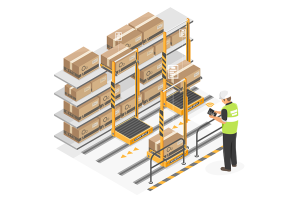 The photo alongside of the construction of iconic Sydney Harbour Bridge got James Marland, Vice President of Network Strategy for Ariba, an SAP Company, thinking. Work began on the landmark structure in 1925, and the construction work moved steadily inwards until it finally met in the middle five years later. While you won’t find him viaduct-spotting or waxing lyrical about trusses, Marland saw some striking similarities in the way that a commerce network is created, in this month’s SmartProcurement.
The photo alongside of the construction of iconic Sydney Harbour Bridge got James Marland, Vice President of Network Strategy for Ariba, an SAP Company, thinking. Work began on the landmark structure in 1925, and the construction work moved steadily inwards until it finally met in the middle five years later. While you won’t find him viaduct-spotting or waxing lyrical about trusses, Marland saw some striking similarities in the way that a commerce network is created, in this month’s SmartProcurement.
It’s effectively a bridge that spans the gap between trading partners, providing safe and compliant passage for transactions. But, crucially, it needs to support a viable business model at both ends, providing value to vendors and buyers in order to maintain its structural integrity. Favouring sellers over buyers, or vice versa, would result in something wonky and unstable.
Take eBay, for example. As the world’s largest online marketplace “where practically anyone can buy and sell practically anything,” it connects a diverse community of individuals and small businesses, which collectively have an enormous impact on ecommerce. The reason eBay has been one of the notable success stories of the dot-com bubble is that it supports both quantity and quality of buyers and sellers to mutual benefits.
Additionally, a network’s infrastructure needs to be sized correctly, with capacity planning taking into account future demand. The original Severn Bridge, linking England with Wales, opened in 1966, at which time it was hailed as the dawn of a new economic era for South Wales. However, by 1984, traffic across the Severn Bridge had tripled and a whole new bridge had to be built just five miles upstream to carry the extra traffic. Not so with the Oakland Bay Bridge in San Francisco – constructed in the 1930s, it was built to last 90 years and today carries around 240 000 vehicles a day on its twin decks.
 Lastly, a network needs to take into account external factors. The Tay Bridge in Scotland failed spectacularly during a gale (killing all 60 passengers on board the train it was carrying), because its flawed design didn’t make sufficient allowance for wind-loading. In the context of ecommerce, these external factors might be changing market conditions or compliance requirements, but the network needs to be based on sound design and resilient infrastructure to weather any storm.
Lastly, a network needs to take into account external factors. The Tay Bridge in Scotland failed spectacularly during a gale (killing all 60 passengers on board the train it was carrying), because its flawed design didn’t make sufficient allowance for wind-loading. In the context of ecommerce, these external factors might be changing market conditions or compliance requirements, but the network needs to be based on sound design and resilient infrastructure to weather any storm.
So, to “mind the gap” a bridge or network needs to be:
• built from both sides;
• sized correctly for future growth; and
• robust to take account of externalities
Which network are you going to join?
Adapted from an article in SAP Business Trends


























